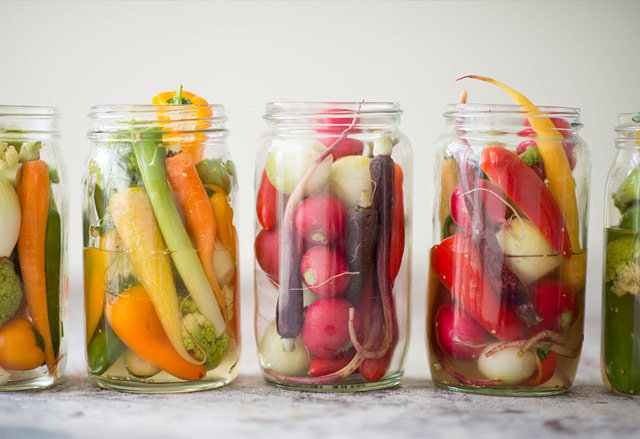A great way to use up veggies that are hanging out in the bottom drawers of your fridge!
The idea of pickling vegetables, is to form a nursing atmosphere in which the vegetables may be preserved and saved from decay. this will usually be done with a mixture of salt, acid, and fermentation with a microorganism. the advantages of pickling during an ancient approach is that carboxylic acid fermentation is allowed to happen.
Traditional pickling ways are an important a part of healthy human diets for thousands of years. industrial product may be questions regarding the methods used to whether or not they still provide any organic process edges.
Vitamins, minerals and also the fiber content of vegetables are still maintained once pickling.
3 Tips for Successful Making Homemade Pickles
Here’s a simple guide to transforming your fresh summer produce into a sharp and piquant playground for your taste buds.
[ux_image id=”5892″ link=”https://optimumwellness.co.za/product-category/alkalised-vitamin-c/”] [gap height=”18px”]1 – Water:
Most water is suitable for pickling, but hard water may interfere with the pickling process and discolor the vegetables over time. Use purified water if you’re in doubt.
2 – Vinegar:
You can experiment with different kinds of vinegar for pickles that you’re storing in the refrigerator. But if you plan on canning them, use vinegars that are at least 5% acetic acid. The percentage is often listed on the label. As long as there is an equal amount of vinegar and water in the brine, you can add or subtract ingredients like salt or sugar to suit your tastes. But be aware that if there is more water than vinegar in the brine, it may not be suitable for canning.
3 – Salt:
Use pure sea salt without any additives or salt labeled “canning” or “pickling” salt. Additives in table salt may make the brine cloudy.

